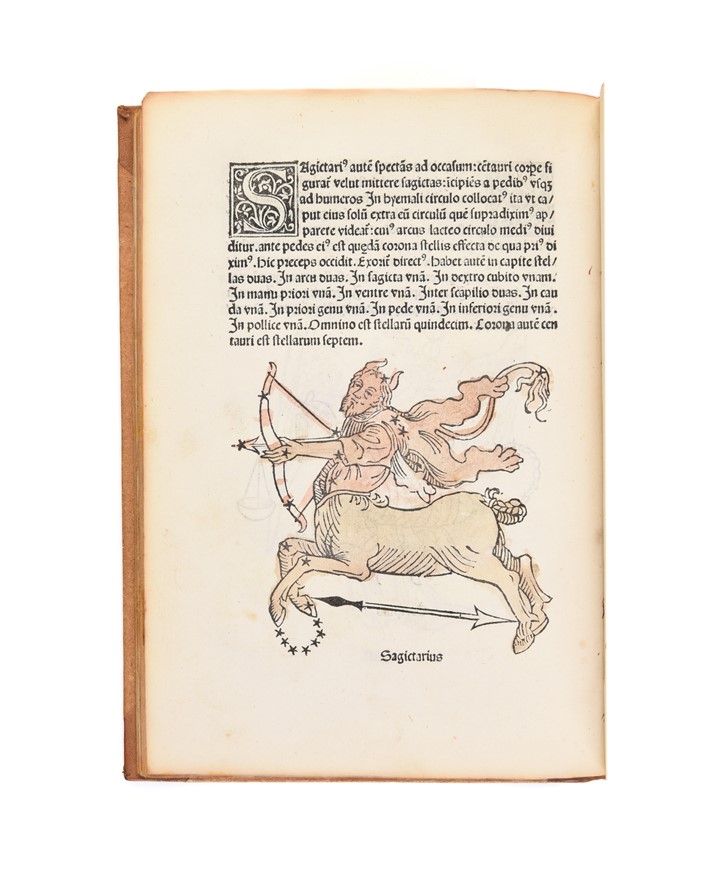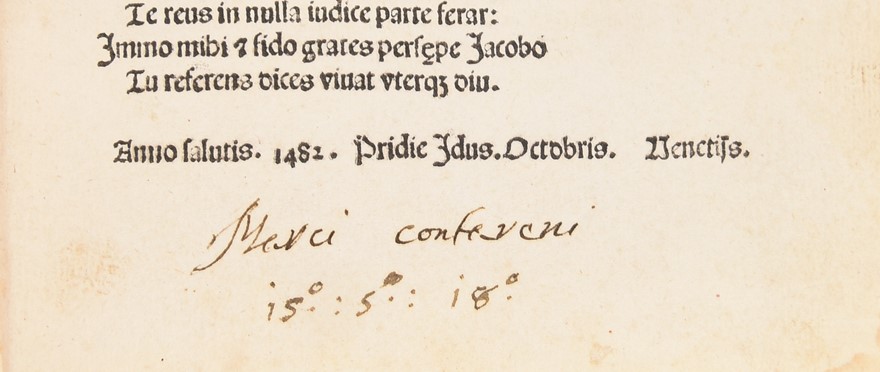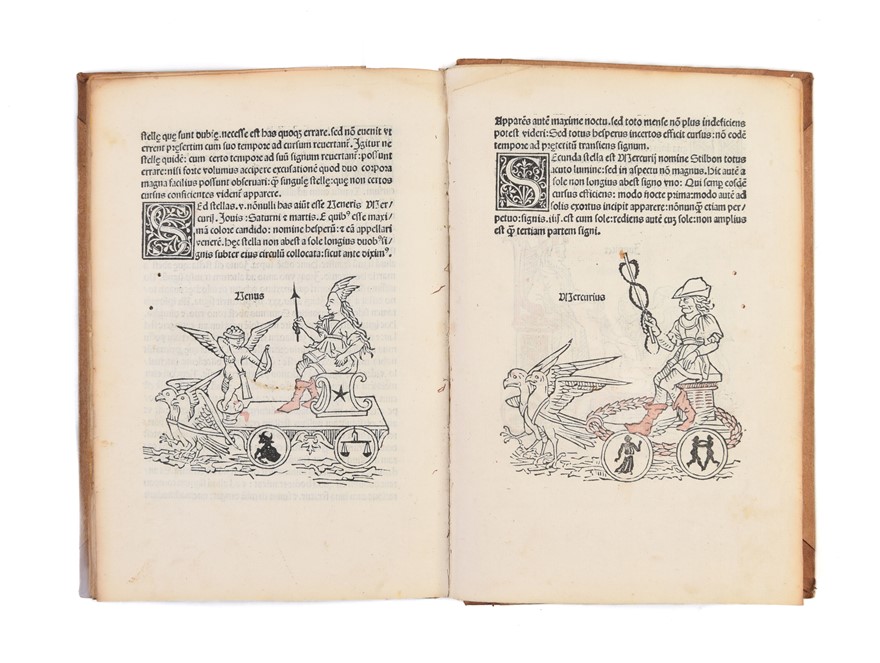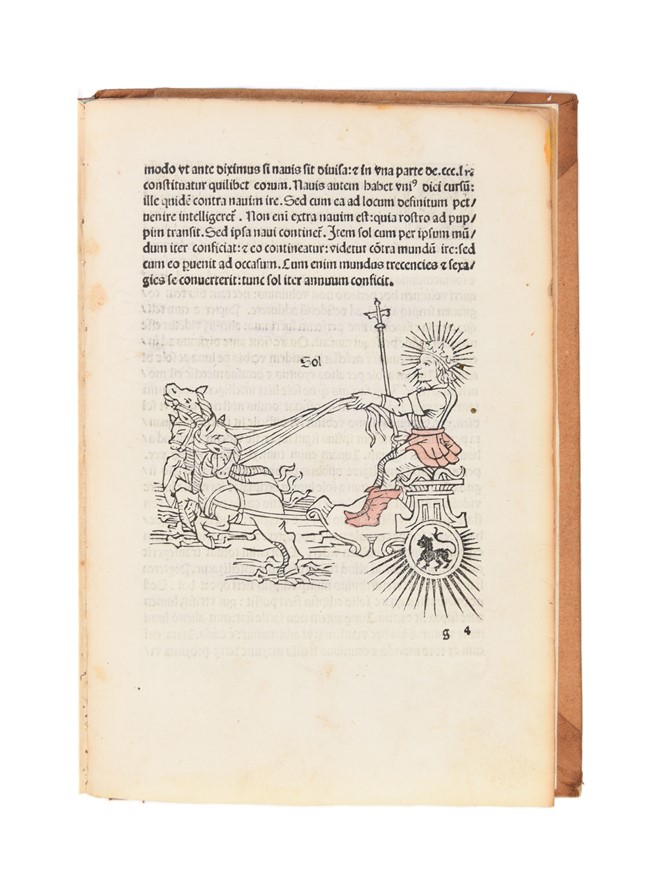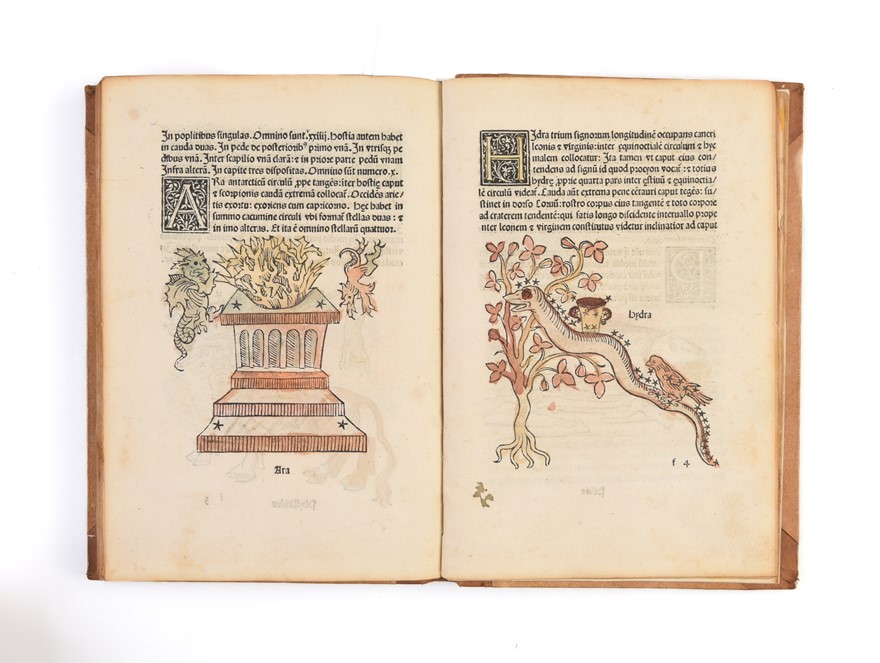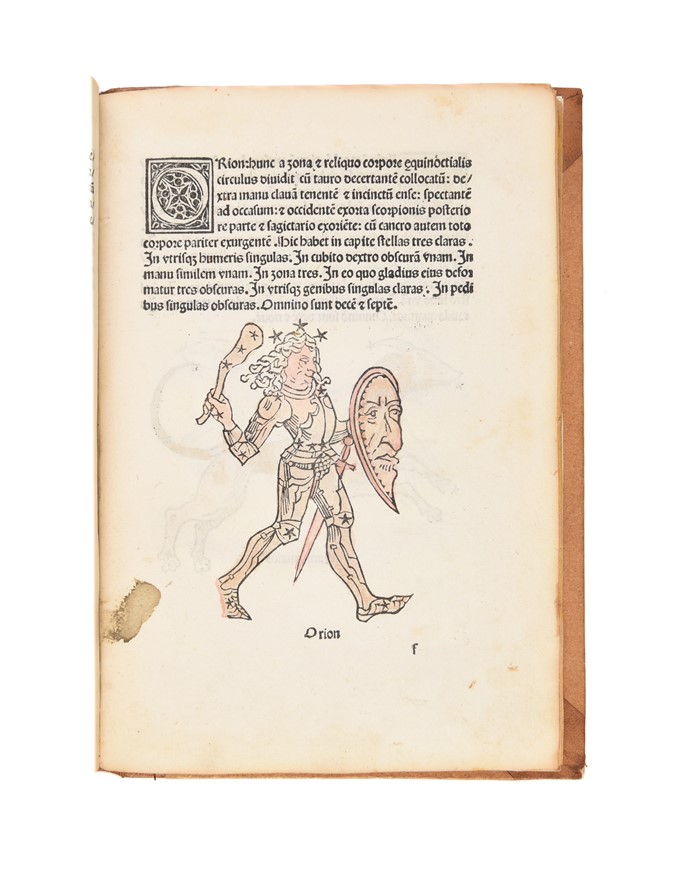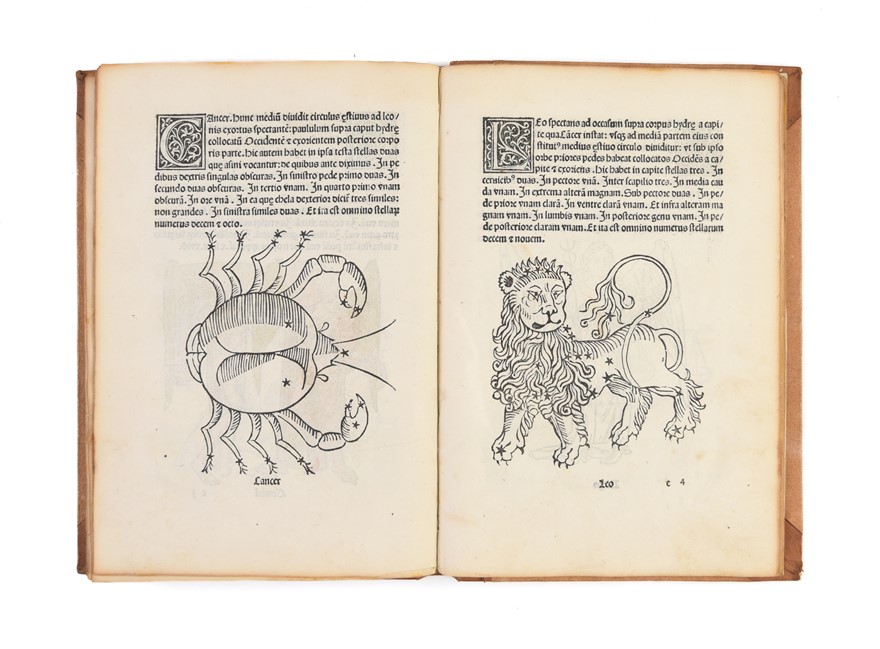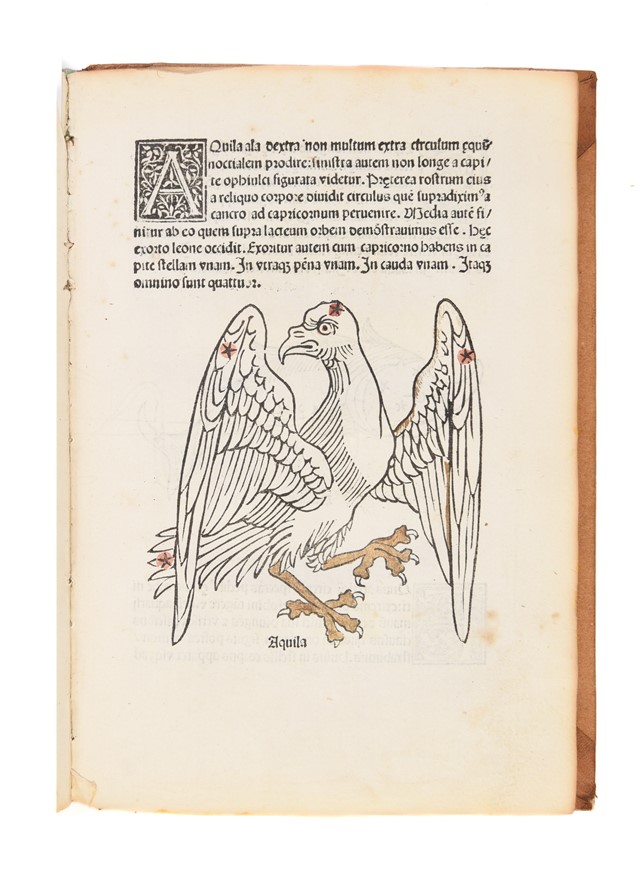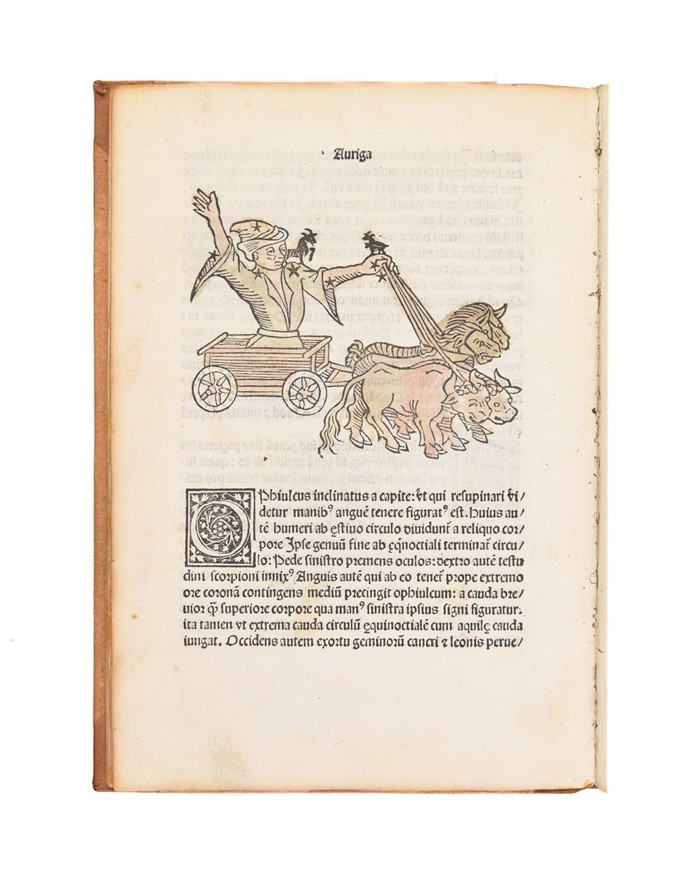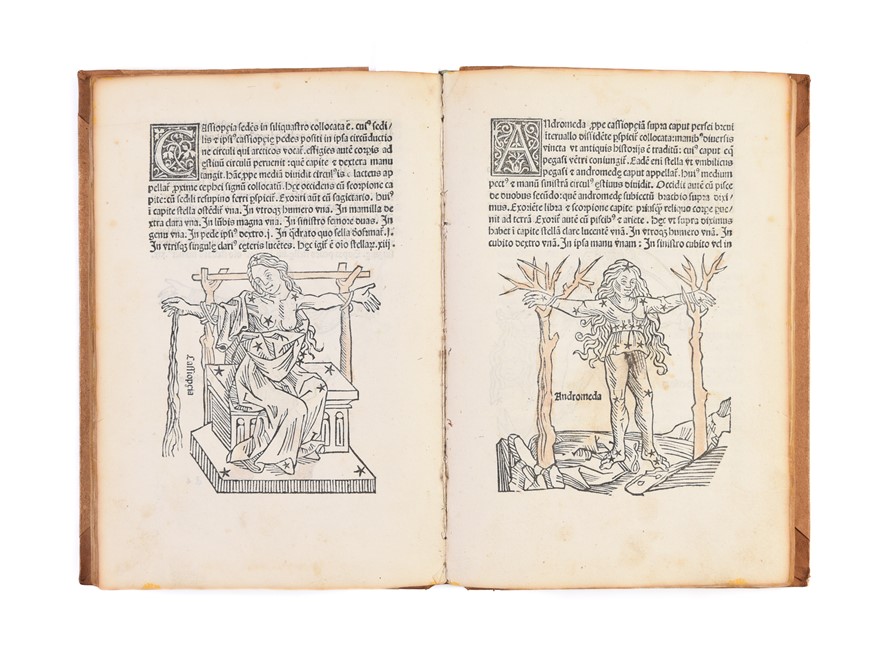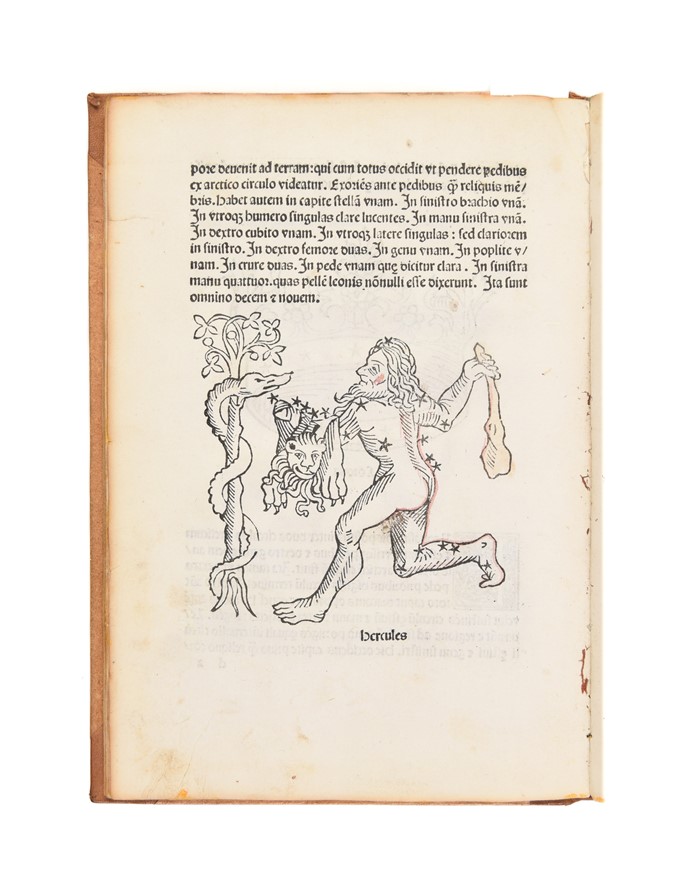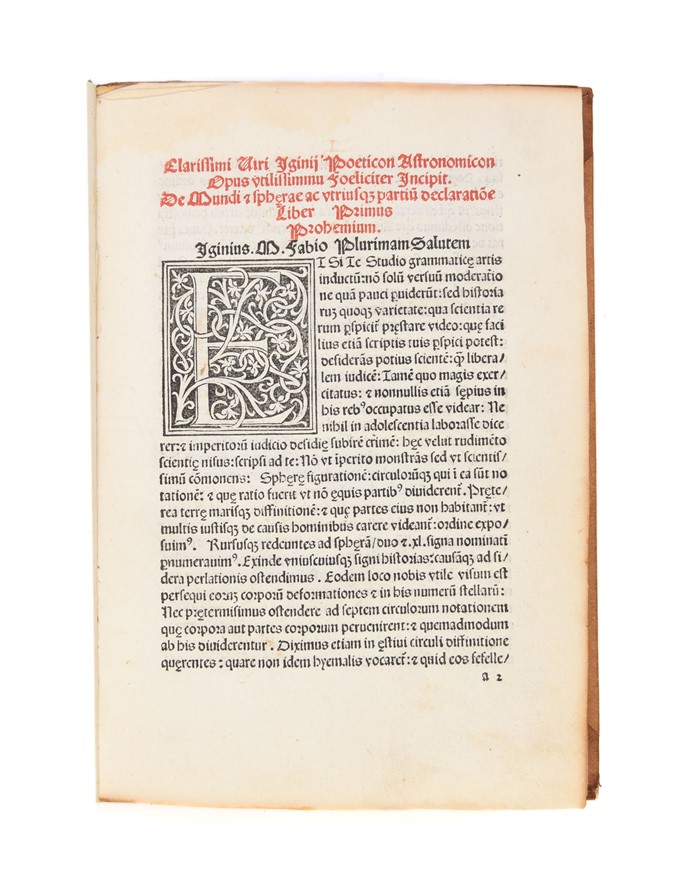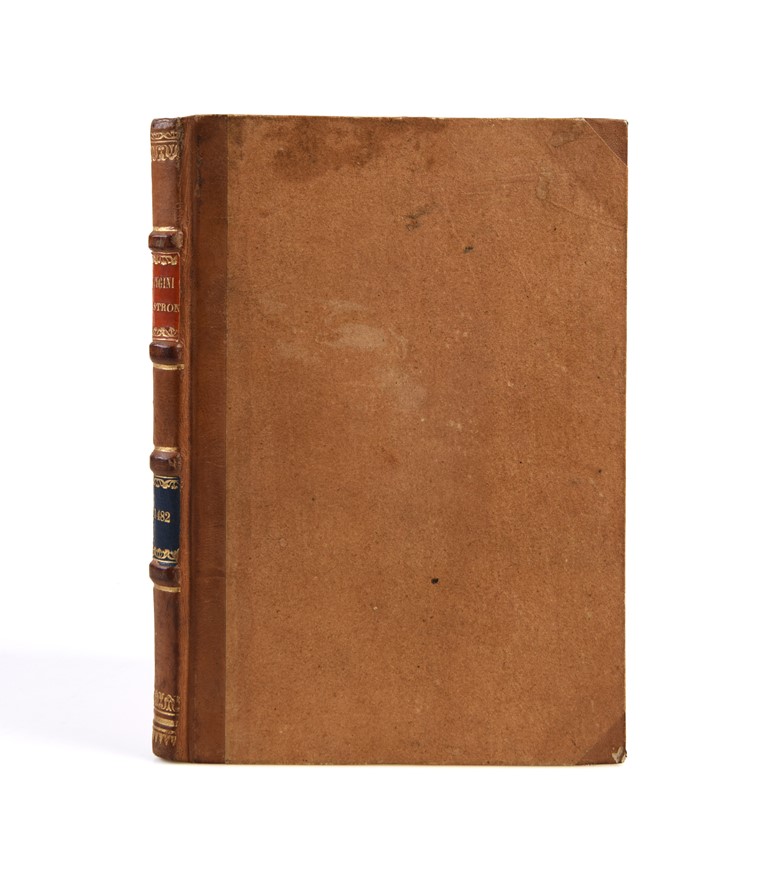Poeticon astronomicon. (Edited by Jacobus Sentinus and Johannes Lucilius Santritter).Venice, Erhard Ratdolt, 14 October 1482.
HYGINUS Gaius Julius (1482.)
£25000.00
Please contact us in advance if you would like to view this book at our Curzon Street shop.
THE FIRST DEPICTIONS OF THE CONSTELLATIONS IN A PRINTED BOOK
Title on a2 printed in red, 47 half-page woodcuts of the constellation and planet figures, probably designed by Johannes Santritter, partially coloured by an early hand in pale red, green and yellow; white-on-black woodcut initials in various sizes, some coloured.
4to (205 x 145mm). 57 leaves (lacks first blank), 31 lines, gothic type, a few words in greek. Late 19th century calf-backed boards, spine with red and green labels lettered in gilt, preserved in a mid-20th century slipcase.
First illustrated edition and the first depictions in a printed book of the constellations, the signs of the zodiac, and planets as conceived in antiquity, which serves as the beginning of celestial cartography. A fine specimen from the Venetian press of the great innovator Erhard Ratdolt.
The design of the woodcuts is attributed to Johannes Santritter and consists of forty constellation figures with star locations which illustrate Hyginus' descriptions in Book III and seven planet figures (Venus, Mercury, Jupiter, Saturn and Mars, and the Sun and Moon) found in Book IV. Santritter, a native of Heilbronn, was also responsible for woodcut diagrams used by Ratdolt in his 1482 edition of Sacrobosco's Sphaera Mundi. The woodblocks remained in Radolt's shop and were re-used in his reprint of 1485 and on his return to Augsburg in his 1488 edition of Johannnes Angeli's Astrolabium. Although astronomically inaccurate they were hugely influential, as noted by Lippincott 'once these images appeared in print ... they became the undisputed model upon which astronomical book illustration relied for the next forty years’.
First published in an extremely rare unillustrated edition of Ferrara 1475 (ISTC ih00559000 lists only 14 copies), the text is attributed to Hyginus and consists of four books: on definitions, the myths of the constellations, the number and location of the stars in the constellations, and the motions of the Sun, Moon and planets. Quite who the Hyginus of this text was is not established (see OCD) but the text was well known: De astronomia was a popular and influential text and source-book from the date of its composition onwards. The most likely candidate as author seems to be C. Iulius Hyginus, the Keeper of the Palatine Library during the reign of Augustus Caesar and friend of Ovid. This therefore places the work between Cicero’s Latin translation of Aratus’s Phaenomena (89-86 BC) and the more scholarly Latin translation (or adaptation) of the same poem attributed to Germanicus Caesar (16-17 AD).
In the entry in Reynolds’ Texts and Transmission, written by Michael Reeve, he asked a propos of De astronomia: ‘Has any classical text been so ill served by recent scholarship as this?’ He does mention the quite large number of manuscripts, but remarks that the work so far done had added little. However, the situation is now changed. The most recent edition is that of Ghislaine Viré (Leipzig: Teubner, 1992) but the Budé text of 1983 ed. Le Boeuffle is to be preferred (see review by M. Winterbottom in CRNS 44 no. 1, pp. 49-50). Winterbottom remarks of the language of the work that ‘unlike the much corrected and mutilated Fabulae’ it is a good example of extended Augustan prose.
At the end are two sets of Latin elegiacs by Jacopo Sentino ‘Ricinensis’, i.e. from Ricina, now Villa Potenza is in the Marche region in Italy. The second of these is about his and Santritter’s edition of Hyginus and dwells on how they have produced a clean text. The third set of verses is actually by Santritter.
The intermittent colouring found in over half of the woodcuts is certainly early; there is careful hatching and outlining in pale red, with earth tones and pale green used on some figures.
Generally a crisp, well-margined, and unwashed copy with some leaves a little toned towards the end, a few mostly minor stains, a very few small wormholes.
Provenance: Marco Contarini, with date 15 May [15]18 of the well-known Contarini family of Venice. In a document in the Venetian State Papers he is described in 1522 as ‘late State attorney.’ On the verso of the final leaf is the number lxvii above a name and two numbers. There is faint numeration as far as XXV in pale pink ink and on ff. b2 and b3 a few marginal notes in the same ink.
From the collection of Alastair Bradley Martin (1917-2010) with a pencil note presumably in his had loosely inserted. Alastair, a grandson of the steel magnate Henry Phipps, and his wife Edith Park were prominent art collectors in a variety of fields, he also served on the boards of the Brooklyn Museum and the Metropolitan Museum of Art. His elder brother was the great bibliophile Henry Bradley Martin (1909-88).
BMC V, 286. Essling, 285. Goff, H-560. HC 9062*. Hind II, p. 462. Pollard/Perrins 31. Redgrave 30. Sander 3472. Houzeau-Lancaster I, 1029. Honeyman 1735.
Ref: K. Lippincott, ‘Hyginus, Michael Scot (?) and the Tyranny of Technology in the Early Renaissance’ in Certissima signa. A Venice Conference on Greek and Latin Astronomical Texts ed. Filippomaria Pontani (Venezia 2017), (Antichistica 13), pp. 213–264..
Stock Code: 247503
